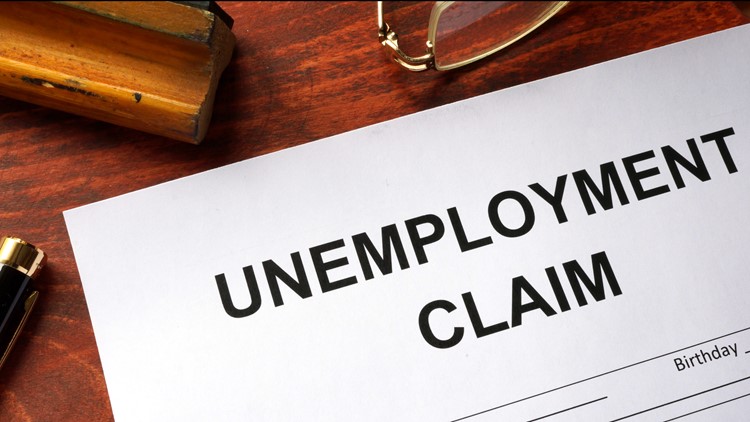DALLAS — Texas recorded 96,141 new claims for unemployment in the latest reporting week. That's up from 89,241 initial unemployment claims the week before.
State officials were anticipating the possibility of increased job losses after the governor, responding to a swell of new COVID-19 cases and hospitalizations, recently began rolling back the state's aggressive reopening plan.
One expert expects another mass wave of layoffs from businesses that received money from the Paycheck Protection Program. In Texas, 382,408 businesses got those PPP loans.
Originally the loans were forgivable if the money was spent to keep workers on payroll for eight weeks. For many of those recipients, that eight weeks is up.
Dan Alpert recently wrote in an opinion piece for Business Insider that demand has slowed for many businesses, and that many businesses aren’t at full capacity yet because of social distancing rules. He is an adjunct professor at Cornell Law School and a founding managing partner of the New York investment bank Westwood Capital LLC.
He surmises many of those establishments may not be able to afford to keep their employees on when PPP money runs out. Without further assistance, he predicts at least 5 to 10 million more job losses nationally.
Additional weeks of unemployment
Responding to an unusually high unemployment rate in Texas right now, the state has announced an additional seven weeks of unemployment benefits for people who have exhausted all the regular weeks of benefits and the previously announced extended weeks of benefits.
In total, many Texans could now conceivably be eligible for up to 59 weeks of unemployment payments, compared to 26 weeks pre-pandemic.
The extra weeks could be taken away again if the unemployment picture improves in Texas.
There is no need to apply for the extra weeks. On its site, the TWC says, "No action is required by the customer, if qualified TWC will automatically enroll the customer."
Work search requirement in Texas
Since March, more than 2.5 million Texans have filed initial unemployment claims, and have been paid a total of more than $16 billion by the Texas Workforce Commission in state and federal unemployment benefits. Some of those who received unemployment payments have since returned to work, but many are still without jobs.
As the Texas economy was rapidly reopening in June, commissioners at the state’s unemployment agency decided to reinstate the requirement that people receiving unemployment benefits conduct three job searches each week they claim benefits. That work search requirement had been waived during the pandemic because many workers were reluctant to be out in public, and many employers were closed or instituting hiring freezes.
But not long after the TWC’s decision to reinstate work searches, which would have gone into effect July 6, the agency reversed the decision because of new business contractions and closures as the outbreak surged in Texas.
In late July, TWC expects to revisit the idea of the work search requirement. Even if the agency decided at that time to reinstate the rule, spokesman Cisco Gamez said there would be a buffer.
“We would definitely give a minimum of two weeks’ notice to let people know the work search requirement is being reinstated," he said.
That means that more than likely, there would not be a job search requirement before about mid-August at the earliest.
Options for employers considering cuts
Meanwhile, for Texas employers facing new or continued economic challenges, there are some options to make life easier for employees facing job or income loss.
If an employer is considering laying off 10 or more people, the company can take advantage of the TWC’s Mass Claim filing process. This might save laid off workers some of the headaches involved with signing up for benefits.
Struggling employers who are considering various options can also choose to enroll in the Texas Workforce Commission’s Shared Work program. Under the arrangement, the employer can cut back workers’ hours, and TWC steps in to make payments to those workers to help offset their income losses.
The program aims to keep endangered employees on the payroll. This year, 2,024 employers have taken advantage of the program, with a combined 84,869 employees covered.
Getting through to the unemployment office
Many people who are unemployed still need to contact the Texas Workforce Commission for a variety of reasons. Most of them have continued to have extraordinary difficulty reaching an actual person at the agency.
If you are attempting to reach TWC by phone, the agency call centers are still on their expanded schedule they ramped up to early in the pandemic.
“We are working extended hours. We are working seven days a week and have those call centers open from 7 a.m. to 7 p.m.," said Gamez.
*Pro tip: During recent holiday weekends, call volumes have dropped considerably, so the Independence Day weekend may give you a better chance of actually getting through.
Additionally, Gamez says you may have an easier time getting through if you call as soon as the phone lines open, or toward the end of the call center hours.
Still, the phone lines have been a huge frustration for many.
Another option: The unemployment agency’s website has an automated chat box in the lower right side of the homepage.
--> Go to https://www.twc.texas.gov/
--> Click on the Chat With Us Box
--> Type "contact" and press enter
--> Click "Request Contact from TWC"
--> Fill out the callback form.
You will be added to callback queue.
*Note: Many people have reported getting a call back this way. Often, they have reported the call came within about six days of them putting the information into the chat box.
The struggle to pay rent
Finally, it’s a new month. Is the July rent going to be a problem? In June, apartmentlist.com reported 32% of renters made just a partial payment or no payment.
And a new study by UC Berkeley found more than 410,900 renter households in D-FW have at least one worker likely impacted economically by COVID-19. They also found Latino and Black renters are disproportionately struggling in the pandemic.
If you are struggling to pay the rent, experts advise that you try to talk to your landlord or property manager to discuss possible arrangements or workarounds. Additionally, you can find resources for renters here and here.
More Right on the Money:
- As COVID-19 cases surge, state agency reverses decision to require Texans on unemployment to look for a job
- Texas unemployment agency’s bank account drained, now borrowing federal money to pay out-of-work Texans
- COVID-19 causes home buyers to look at suburbs, Gen Z renters to move in with parents
- Property appraisal protest tips, and some unemployment and credit help too
- Why hundreds of thousands of Texans approved for unemployment aren't receiving money



